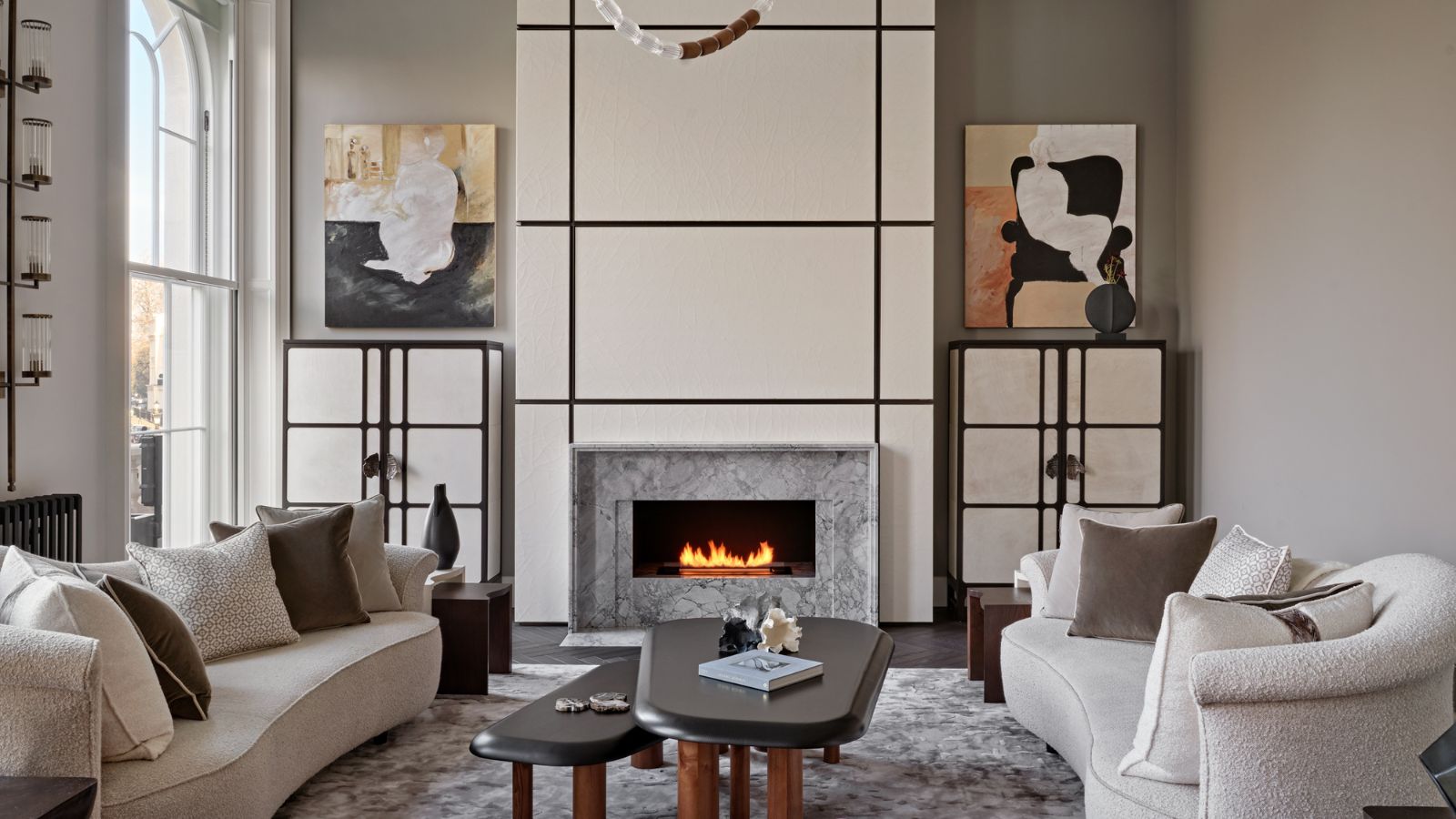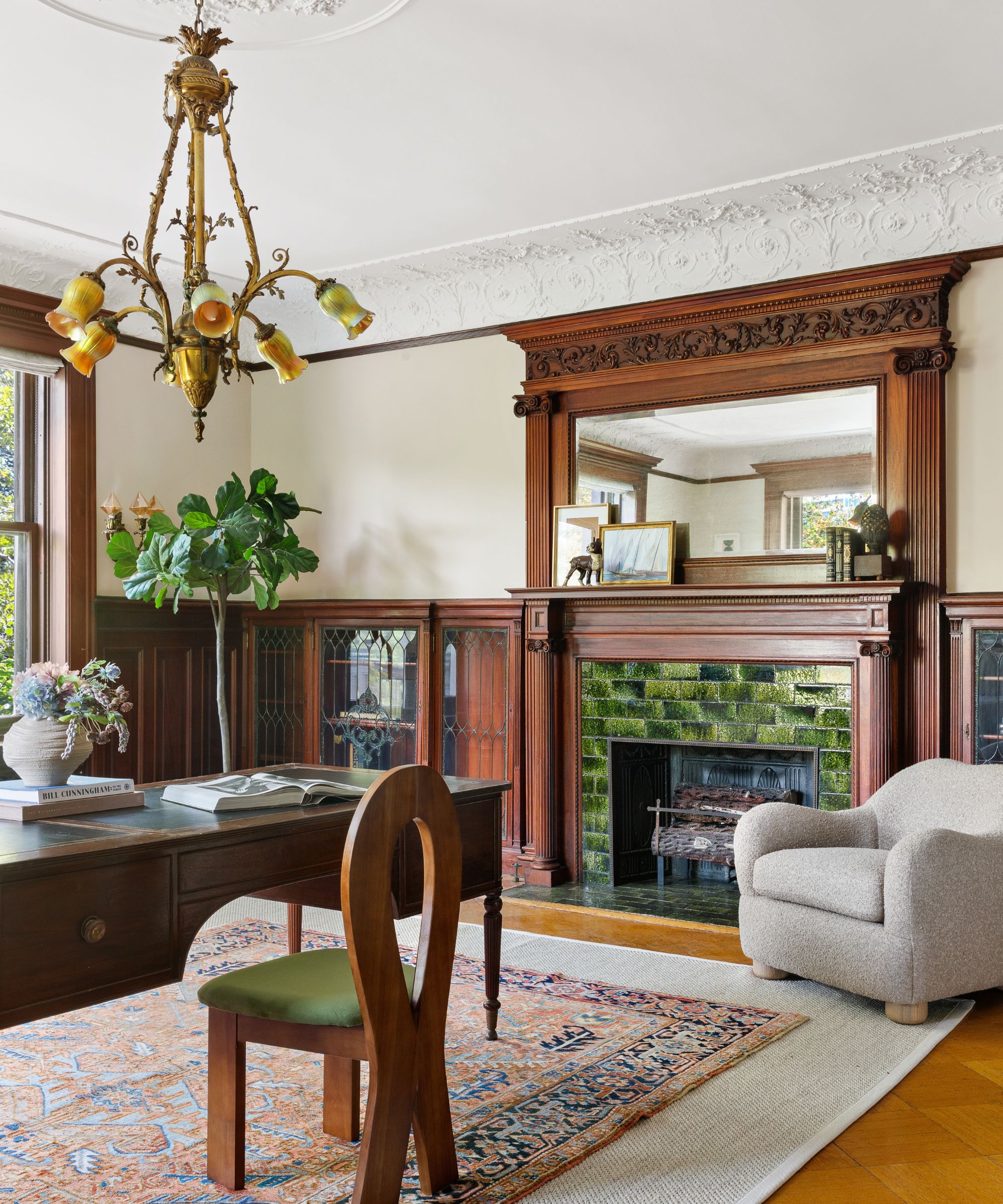What you need to know before adding a fireplace to your home
Love the idea of fitting a fireplace? Our expert guide contains all you need to know


However efficient your home heating, the idea of adding a fireplace to a house is very appealing. Nothing’s cozier than gathering around the fire together, and a fireplace can also make a fabulous focal point for a room.
A fireplace can complement a range of home heating types, providing extra warmth in the area where it’s fitted, and it can have a traditional look or more modern, sleeker lines to complement a home’s architecture and style of decor.
We’ve put together an expert guide to help you understand whether you can add a fireplace to your house. The guide details the types available and how easy they are to install.
Can you add a fireplace to a house?
When you are installing heating, issues such as which type of heating is the cheapest to run and the options for eco heating may be considerations. But when you’re thinking about a fireplace, the question of whether you can fit one in your home is the crucial issue.
The good news? ‘For the most part, you can install a fireplace in almost any house,’ says Brian Mollo, owner of Trusted Home Buyers. 'The issue that might make this more or less difficult is the type of fireplace you want to install.’
The options on offer and where they might be installed are all below.
Fireplace types

There are a range of fireplace types you might consider, including masonry fireplaces and gas and electric.
‘A traditional wood-burning masonry fireplace will be the most costly addition to a home, as it requires a chimney and foundational and structural support,’ explains Glenn Wiseman of Top Hat Home Comfort Services.
‘You will likely also have to confirm its allowance and any permit considerations based on building codes in your specific area. Prefabricated gas or electric fireplaces will likely be easier to install and less costly.’
Wood-burning fireplaces

If you want to burn wood in the fireplace there are two options: ‘You may opt for a site-built hearth, which is a traditional fireplace constructed with masonry and brick,’ explains Glenn Wiseman. ‘Or you can use a prefabricated model, which inserts a factory-built model into the home, usually at a much cheaper cost.’
As noted above, a masonry fireplace is the most expensive of the different fireplace options you can add to a home. ‘Masonry will always be more expensive than the other options to install because it is the most extensive of the options available,’ says Korey Gregory, Superintendent for ASAP Restoration. ‘Rocks, bricks, and mortar are all heavy and require more labor to install correctly.’
Be aware, too, that wood-burning fireplaces are the most costly to maintain. ‘Wood-burning options will leave soot throughout the entire ducting system that needs to be removed to prevent chimney fires from happening, which can cause a puffback inside the home,’ Korey explains.
Gas fireplaces

Photography/Brent Darby
Gas fireplaces provide an alternative to wood and are a simpler addition to a house than wood-burning versions. Choose between models that need to be vented and those that are ventless.
‘Gas fireplaces are a popular alternative to wood-burning stoves as they can mimic the aesthetic without the actual smoke or debris,’ says Glenn Wiseman. ‘Direct-vent gas models are efficient and easy to operate, as they expel the gas outside the home through a preinstalled vent and do not require many safety considerations after that in comparison to wood-burning models. In contrast, a vent-free model will not need a vent and can create heat with either natural gas or propane hookups.’
Adding one of these is more straightforward than putting in a wood-burning design. ‘Gas-burning fireplaces are less involved to install than wood-burning ones simply because there is a lot more to deal with when it comes to wood ash and soot,’ explains Korey Gregory.
Electric fireplaces

An electric fireplace can be suitable for use in all sorts of homes and will likely be the easiest to install.
‘There are many different electric options, ranging from stand-alone mantels to built-ins,' says Glenn Wiseman. 'The maintenance requirements for these models are next to nothing, as you will only need to consult a technician if it stops working properly. If you have no existing flue, chimney, or venting system, an electric model will be the most affordable and efficient system to install in your home.’
Installation knowhow
Be aware of local building codes when adding a fireplace. ‘Most common codes have to do with construction aspects, running gas, or adding an electrical line to your project,’ says Randy Wendolek of Hearth & Home Technologies. ‘Every municipality can be different, so if you are doing it yourself, it’s important to check local government codes. If hiring a professional, they will know what applies to your area and can get the necessary permits and arrange for inspections.’
Wood and gas fireplaces should be installed by professionals, urges Randy 'Professionals ensure your fireplace is up to code, and clearances to combustibles are maintained at a safe distance. As long as a fireplace is installed according to the installation manuals, it will be safe and operate as expected.'
‘Electric fireplaces are much easier to install yourself because no gas line or special venting is required. The type of project and complexity of the installation will determine when to hire a professional.’
FAQs
Can you put a fireplace anywhere?
Where you can put a fireplace depends on its type. Typically, they need to be positioned on an exterior wall, but an electric fireplace offers more options. A fireplace installer can advise. ‘Hire a credentialed fireplace installation professional who is trained, knows the local codes, and how the fireplace needs to be installed to be compliant and safe – that will also guarantee their work,’ advises Keith Richardson, President at Arizona Fireplaces.
If you opt for a wood-burning fireplace, quick tricks for stacking wood and initial ignition will prevent blowback and keep it burning. Meanwhile, heat-retaining tricks will keep the rest of the house away from a fireplace warm without the need to turn up the thermostat. And, if the worst happens and there’s a breakdown, there are ways to heat your house when the furnace goes out.
Sign up to the Homes & Gardens newsletter
Design expertise in your inbox – from inspiring decorating ideas and beautiful celebrity homes to practical gardening advice and shopping round-ups.

Sarah is a freelance journalist and editor. Previously executive editor of Ideal Home, she’s specialized in interiors, property and gardens for over 20 years, and covers interior design, house design, gardens, and cleaning and organizing a home for Homes & Gardens. She’s written for websites, including Houzz, Channel 4’s flagship website, 4Homes, and Future’s T3; national newspapers, including The Guardian; and magazines including Future’s Country Homes & Interiors, Homebuilding & Renovating, Period Living, and Style at Home, as well as House Beautiful, Good Homes, Grand Designs, Homes & Antiques, LandLove and The English Home among others. It’s no big surprise that she likes to put what she writes about into practice, and is a serial house renovator.
-
 Charred little gem with saffron dressing
Charred little gem with saffron dressingThis recipe with charred little gem is both easy to make and sure to impress guests. It's the perfect side for fresh spring menus
By Alice Hart
-
 Grilled asparagus with herb and pickled red onion
Grilled asparagus with herb and pickled red onionThis grilled asparagus couldn't be easier, and it's a wonderful way to get the best flavor from our favorite spring veg. It's perfect alongside fish or lamb
By Alice Hart